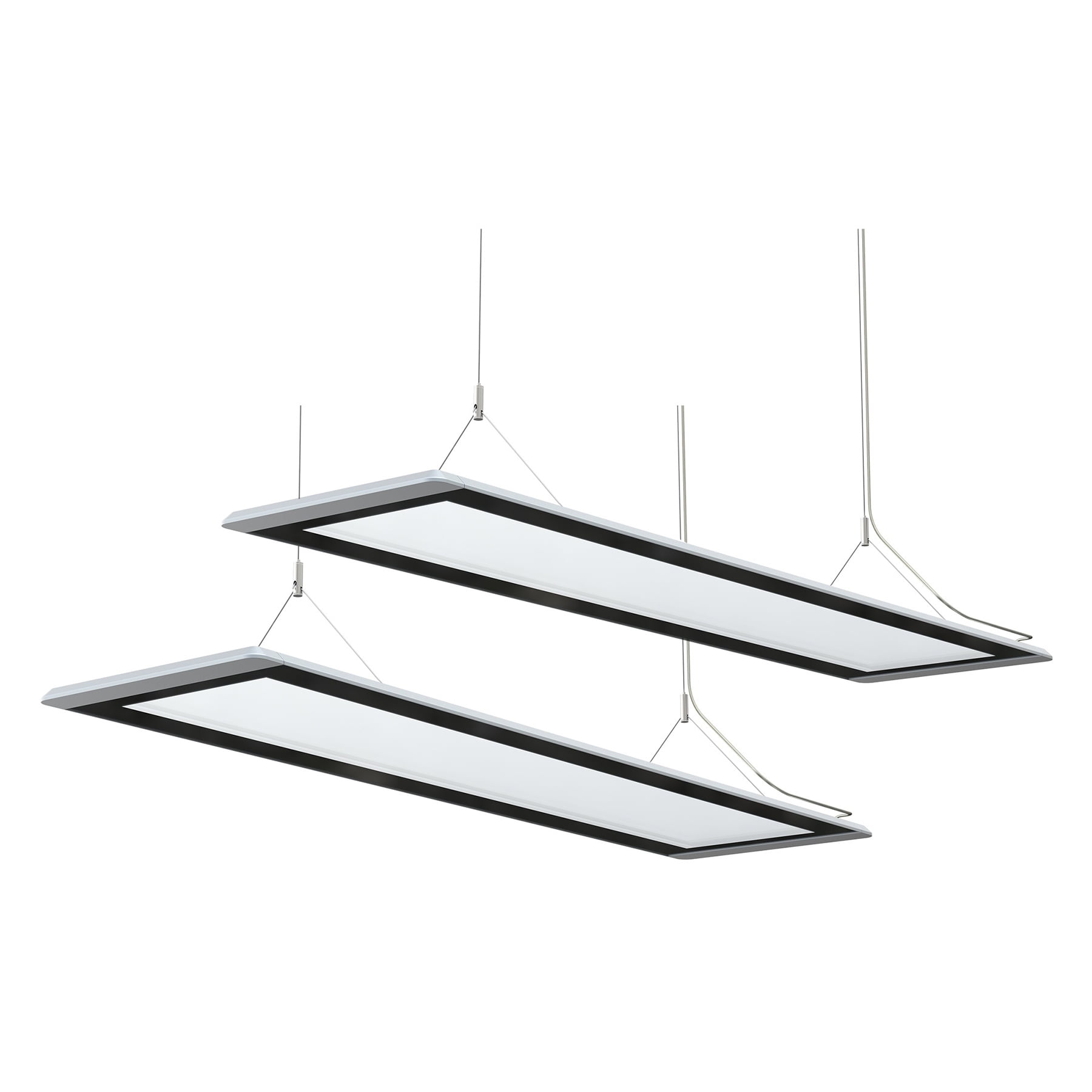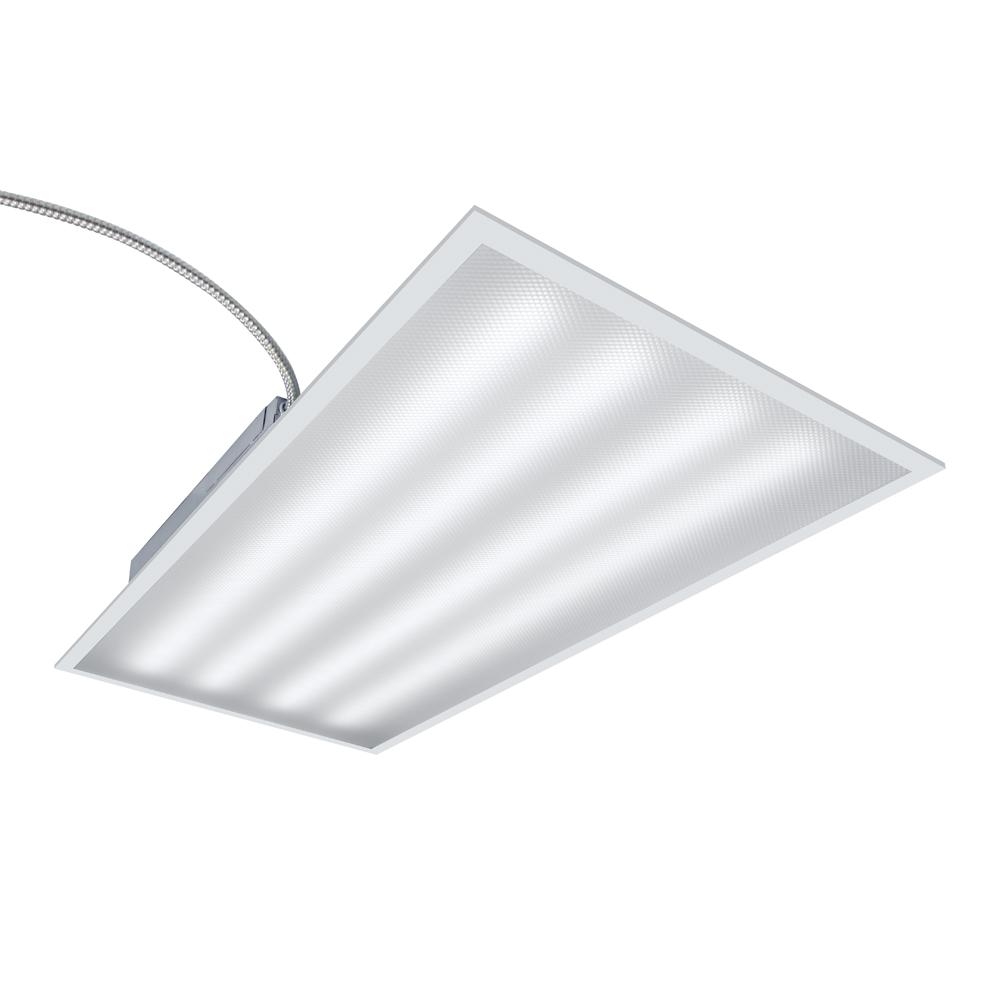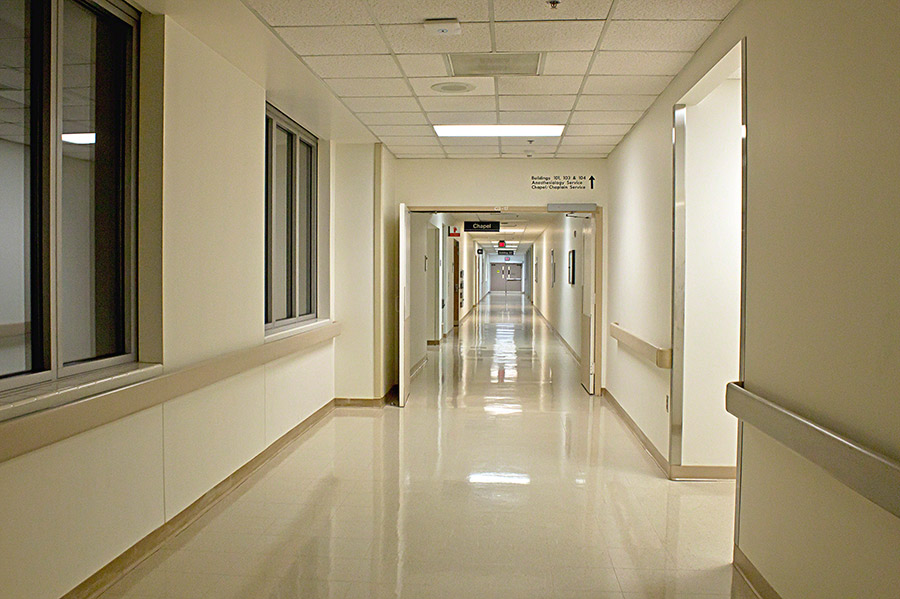


The side-emission design allows for color mixing within the light guide, this addresses the color uniformity issue that can be evident in direct-lit LED luminaires when there're color deviations between LEDs. Edge-lit LED panels produce extremely uniform light distributions that are highly desired in general lighting applications. Soft, pleasant luminance devoid of harsh shadows across the entire span of a light panel delivers unprecedented visual comfort that is impossible with conventional designs. Edge-lit technology enables luminaire designers to create surface emission devices with LED point sources. With the advent of edge-lit LED lighting, there's never been a better time to ditch maintenance-heavy fluorescent troffers and also the visually unpleasant direct-lit LED luminaires. The optical combination of total reflection, refraction, and Lambertian scattering allows the high intensity light emitted from edge-mounted LEDs to be uniformly extracted and distributed across an emission surface. The light guide refracts the beams towards an opal diffuser which provides Lambertian distribution of the light. These light extraction points are distributed in a way to support uniform distribution of the escaped light behind a rear reflector.

The light guide has interruption points which allow light captured by the light guide to escape. Light emitted by the LEDs is coupled into the LGP and transported within the light guide over a desired distance through total internal reflection (TIR). An array of miniature LEDs are placed along two or four edges of a light guide panel (LGP). As such, conventional optical design of direct lighting involves various compromises.Įdge-lit technology capitalizes on light guide technology as well as characteristics unique to LEDs. High level of diffusion affects the LED light transmission due to large amounts of scattering loss. Even with diffuse shielding, these pinpoint light sources can still create hot spots of focused light that would detract from the visual appeal of a fixture. By the very nature of their design and operation, LEDs are high flux density light sources that produce concentrated light output. LEDs can be particularly challenging in designing direct-lit luminaires. Optical systems for lamp-based fluorescent luminaries are rather bulky and inefficient. reflectors, diffusers, lens, and louvers, have been used to control glare from the unwanted angle of view or to reduce excessively high luminance of the emission interface. In the past, direct lighting with luminaires designed in a conventional way are challenged with improving uniformity and reducing discomfort glare. In interior spaces where people spend a long length of time working or learning, lighting is a critical element of the design that may enhance or degrade organizational productivity, task concentration, environmental and job satisfaction, social interactions, aesthetic perceptions, safety and security. Mitigation of glare, shadows, and other undesirable visual effects is equally important.

However, achieving quality lighting in task-laden spaces such as offices, classrooms and laboratories involves more than simply specifying the illuminance level. Oftentimes they are the only option for spaces with low ceiling heights, which are found in buildings with suspended mechanical ceilings (i.e., drop ceilings). In contrast to general diffuse and indirect lighting systems, direct-type luminaires are most efficient in delivering light to a horizontal task plane. General lighting in commercial and institutional spaces is ubiquitously provided by direct-type luminaires which provide 90% to 100% downlight. The Dilemma of Direct Lighting with Conventional Optical Design For a long time however, this has been a mission impossible because of the inherent limitations of conventional lighting technologies. The goal of lighting in these spaces is to enable occupants to see their visual tasks easily and comfortably while addressing economic and environmental concerns, and taking architectural considerations into account. They are workhorses in offices, hospitals, schools and commercial facilities where overhead luminaires are the primary source of ambient and task lighting. Troffers are square, rectangular or linear light fixtures that are installed in the ceiling and distribute light downwards only. Functionally speaking, it is a flat panel troffer. An LED panel light is a low profile, fully luminous panel that utilizes edge-lit LED technology to deliver uniform, smooth and visually comfortable direct (downward) lighting.


 0 kommentar(er)
0 kommentar(er)
